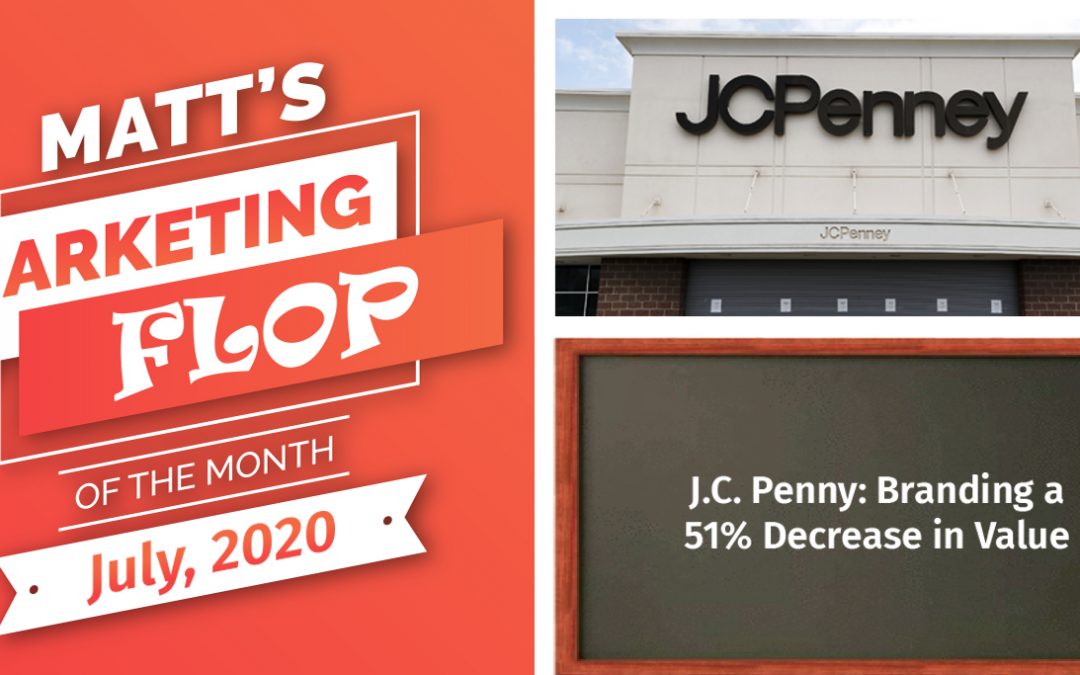[sb name="top-banner"]
[sb name="top-flops"]
Remember 2011?
Ron Johnson would like to forget it.
That's the year he was appointed CEO of J.C. Penny (Penny) and proceeded to use his experience as Apple's VP of Operations to cease Penny's relentless promotions of special offers and discounts on all merchandise.
What he wanted essentially was a Starbucks of retail. That is, a "third place" (Starbucks founder coined this phrase) where people would hang out and feel comfortable paying full price for Penny's merchandise.
However, from 2011 and into 2012, sales dropped dramatically.
In the fourth quarter of the 2012, same-store sales dropped 32%, which led some to call it "the worst quarter in retail history."

Photo Credit: The Motley Fool
On April 8, 2013, Mr. Johnson was fired as the CEO of J. C. Penney and replaced by his predecessor, Mike Ullman.
What went wrong?
The problem was Penny's core market loved chasing Penny's offers, and didn't want to "hang out."
Also, Penny's wasn't selling Apple computers that are unique enough to inspire cult-like devotion. Instead, Penny's sold clothing that could be found in similar stores, expect for much cheaper.
This would be like a food store refusing to discount soup.
Well, I'm sorry but you can buy soup and clothes similar to what J.C. Penny sells almost anywhere.
The bottom line is once you have an established brand that drives loyalty from a specific market, you also have a brand that drives total abhorrence from other markets.
For example, Saks Fifth Avenue customers like their high-end brand of expensive, unique clothing at NOT discounted prices.
Simply put, they enjoy the feeling of status that Sacks Fifth Avenue clothing gives them.
Did Mr. Johnson honesty think these shoppers were going to say,
"Hey, J.C. Penny has suddenly decided not discount their traditionally discounted clothing, so let's shop there instead!"
I think not.
Instead, loyal J.C. Penny shoppers lost the fun of bargain hunting, and decided to move on over to the competition instead.
And now in 2018, J.C. Penny has had a very difficult time luring these shoppers back, long after the re-branding efforts of Mr. Johnson were terminated with his tenure. Today, the chain is a fraction of what it once was.
As I've said in my video about how to be a luxury priced-brand, you need to be able to demonstrate product superiority.
But there was no demonstration of this value given.
Also:
Customers wanted to know why the discounts went away.
Why the brand had suddenly changed.
And why they should continue buying.
These questions were left unanswered.
I know from working with big chains that the numbers get so big and compelling that you can easily forget you are dealing with one shopper at a time.
At the end of the day, Mr. Johnson could have been successful, eventually. But it would have taken a lot of time, and a lot of sacrifice in terms of decreased sales.
Unfortunately when you have a Board, shareholders and customers, you have to make multiple sales of your vision all at once. And sometimes when one group isn't being sold fast enough, the others follow suit very quickly.
[sb name="newsletter"]
More Marketing Flops
Netflix: Prices Rise, Value Plunges
[sb name="top-banner"] [sb name="top-flops"] On July 12, 2011, Netflix CEO Reed Hastings announced a new pricing model separating its streaming service from DVD-rentals. The combined subscription that had previously cost $9.99 was split into two separate plans at...
Little Caesars: From #2 to #4 in Pizza
[sb name="top-banner"] [sb name="top-flops"] In 1994, Little Caesars was the #2 pizza chain in America (just behind Pizza Hut) with $2 billion in annual sales. In 2010, it was number four, with half as much revenue. Here is the breakdown of pizza market leaders in...
Get My Free Updates
Maverick was listed by Forbes as the #1 Consultant Who Avoids the B.S."

